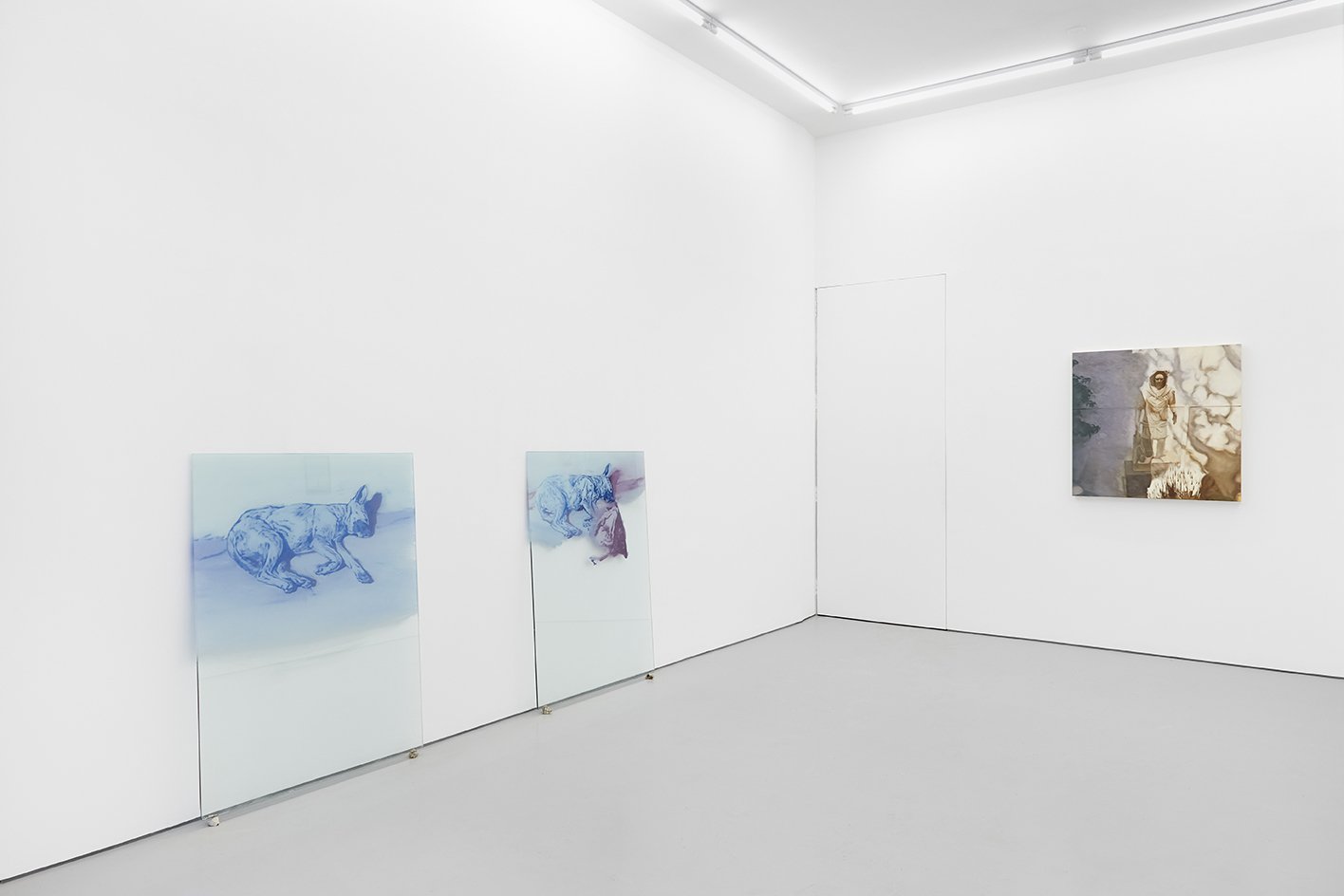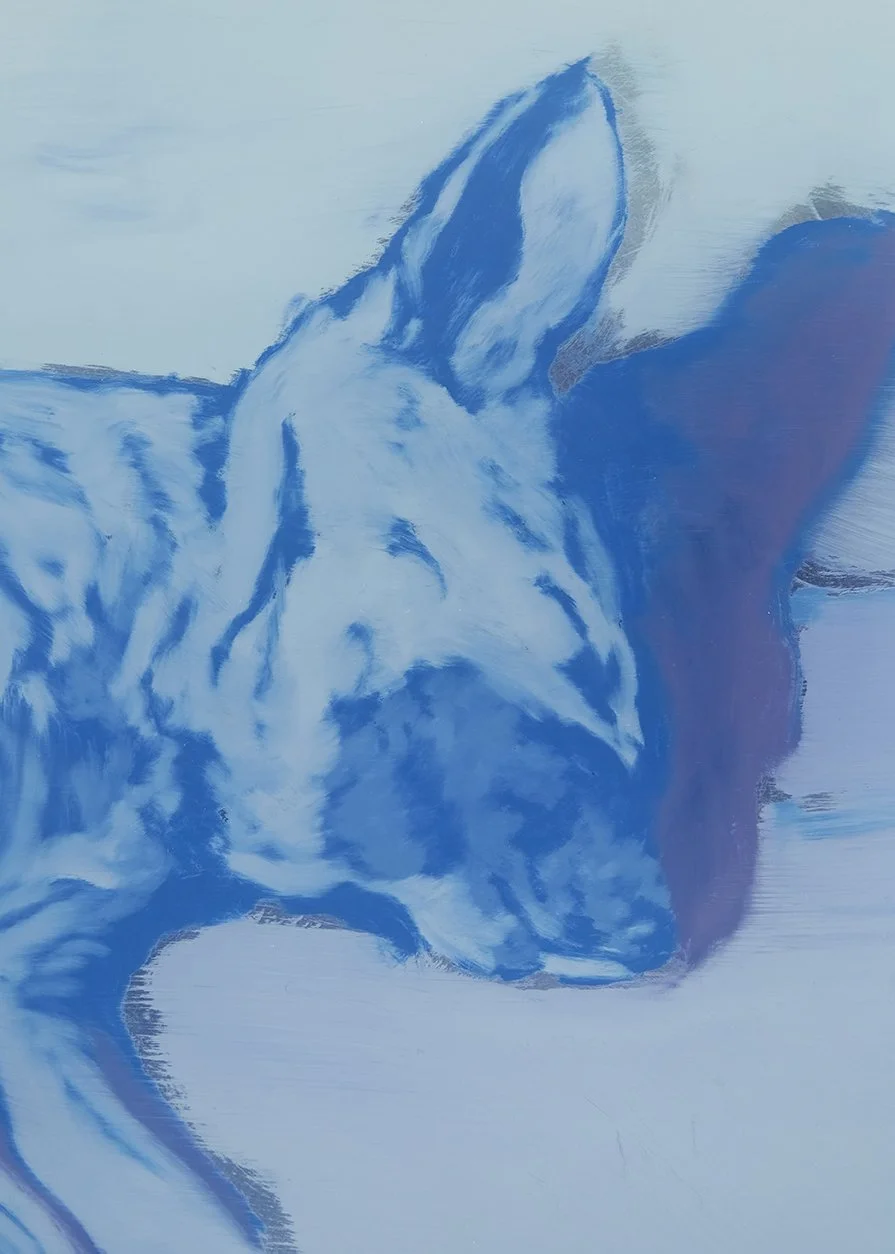-
I am an artist and researcher who examines how migration affects our understanding of art. Recently I have used the production, movement and heritage of the ancient pigment Tyrian Purple across the Mediterranean as a metaphor to examine the structures of power present in the region throughout history.
Exploring the extractive processes needed to synthesise the pigment and its subsequent implications as the symbol of Imperial Rome, I occasionally address Europe’s colonialist legacy in North Africa whilst also recognising the potential of art in providing a means of agency for the past, present and future.
-
In my practice I generate collaborative, discursive research, which is subsequently synthesised in the studio into visual material presented in mediums such as glass, paint and text pieces.
I employ a view of iconographic migration as outlined by German art historian Aby Warburg. I search for recurring signs or symbols, with the painted image acting as a reference point. The resulting interdisciplinary engine of my practice acts as what Warburg describes as “an observation tower [that] looks out over all the migratory routes of cultural exchange”.
-
b. 1994, London, England
Lives and works in London
Education
2013-2017, BA (Hons) Fine Art, Central St Martins, UAL, London
2012-2013, Foundation Diploma Art and Design, Central St Martins, UAL, London
Selected Group Exhibitions:
2024, Home and Away, Gallery 2,Matt Carey-Williams,Seoul, South Korea
2024, You were kept awake all through the night, British School at Rome, Italy
2023, Perfect Passive, Xxijrah Hii Gallery, London
2023, Horizon Line, Andrew Reed Gallery, Miami, USA
2023, On the edge of fashion, Rose Easton, London
2022, Tree and Leaf, Hannah Barry Gallery, London
2021, Triggered Economics or How to Commit to the Inevitable, 34 Bruton Street, London
2020, WDT 1:1, Wetdovetail, Online
2019, Exceptional: The Collyer Bristow Gallery Graduate Art Award, Collyer Bristow Gallery, London
2019, Four Good Eggs, Brixton Beneficiary, London
2018, Paper Cuts Kristian Day, Saatchi Gallery, London
Residencies:
Sainsbury Scholarship, British School at Rome, September 2023 - March 2024
Xenia Creative Retreat, February - April 2022
Events, Panels and Discussions:
Michael Armitage in conversation with Aaron Ford, British School at Rome, 2024
Negotiating the Italian Legacy, NABA University and On-Site Roma, Rome, May 2024
CRIT #33 Public Programme, CASTRO Projects, Rome, Jan 2024
Introductory Lecture, British School at Rome, Oct 2023, Jan 2024












